
It's unbelievable to me now but for the first few years I played guitar, I had absolutely no idea what a truss rod was – let alone how to adjust it. Blame it on being self-taught and knowing few other budding guitar players at the time but I didn't know just how hard I was making it. I just thought my Marlin Slammer was really hard to play because that's how beginner electric guitars were.
If I'd known even the basics of how to set up a guitar – or even knew it needed setting up so I could take it to a guitar tech, I'd have had a very different playing experience. So after talking about how to lower or heighten guitar string action, it's time to talk truss rods for electric and acoustic guitars. And we better begin with what they are, and what they actually do.
What is a truss rod ?

The truss rod is a metal bar that runs down inside the length of a guitar's neck to help keep it straight under the constant and relatively intense tension of the strings. Conditions like string gauge, tuning and temperature changes can affect your guitar's neck shape and the truss rod is made to be adjustable in a tight cavity inside the neck's wood so you're able to help counteract these factors and keep your guitar playing comfortably for you.
If the truss rod is too loose it can cause neck bow (too concave and a high action) and if it's too tight the neck angle can be convex with back bend (action is too low in places).
You will probably need to adjust the truss rods of your guitars multiple times over time to keep your necks in good straight shape for playing, and if you approach adjustments carefully and follow our process, you'll soon become confident with it. It's when you aren't careful that the risk of damage to your guitar becomes an issue. But remember; truss rods are designed to be adjusted.
Types of truss rod
There are two main types of truss rod you'll encounter on guitars; single-action and dual-action. They affect the way the way you can adjust them.
A single-action truss rod can only be adjusted in a single direction; tightening to to straighten the neck and pull it into back bow. Looosing it means the tension of the strings will be pulling the neck into relief, not the truss rod itself. Needing to remove back bow is the rarer case with a guitar.
A dual-action truss rod can be adjusted in either direction; forcing the neck into a back bow. this type of truss rod tends to weigh a bit more and are more flexible to work with to fine-tune to your preference, because you're not so reliant on the string tension for the adjustment the opposite way.
It's important to check your guitar's specs online to understand what kind of truss rod you're working with.
Get the MusicRadar Newsletter
Want all the hottest music and gear news, reviews, deals, features and more, direct to your inbox? Sign up here.
Know when you need to adjust
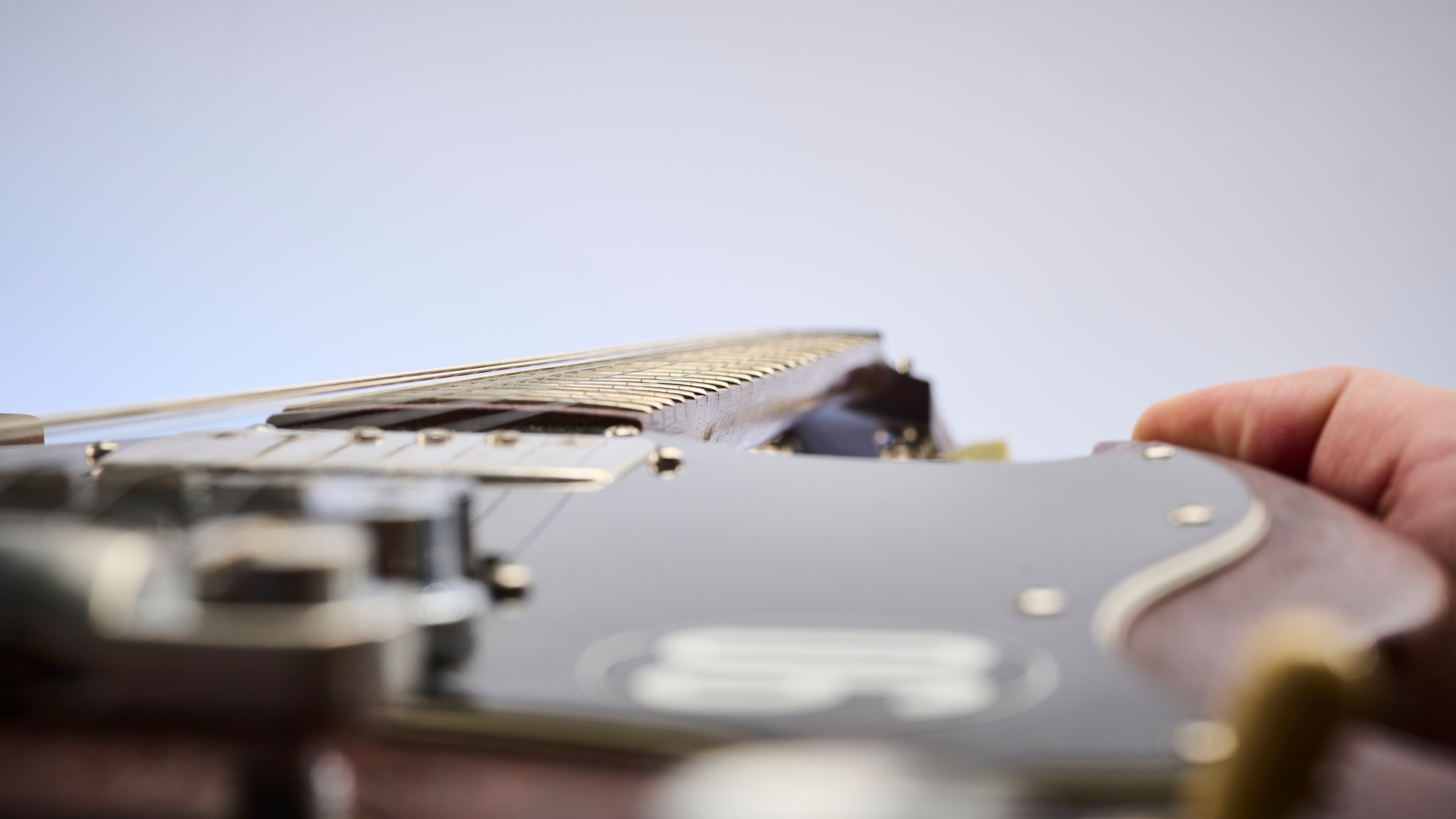
The old method of looking down your guitar's neck to check it for bowing can give you an idea of the situation but isn't exactly foolproof – when it comes to adjustment I'm keen on process and measurement so I know exactly where I stand.
A straight edge is a great way to see how much bow or relief you have along your guitar's neck with the strings on – the Tri-Beam 3 'n 1 Dual Notched Straightedge, which has the bonus of being useful for checking your fret heights with the strings off too.

But the company also make something else that's great for the job of truss rod adjustment…
In my article on how to adjust your electric guitar string action I talked about what a great investment MusicNomad's six-piece MusicNomad Precision Setup Gauge Set is, and I'm going to prove it again here – this time when it comes to adjusting your truss rod.
You can also purchase the gauge and 'pick capo' from the set to measure your neck relief separately at retailers including Thomann and Sweetwater.
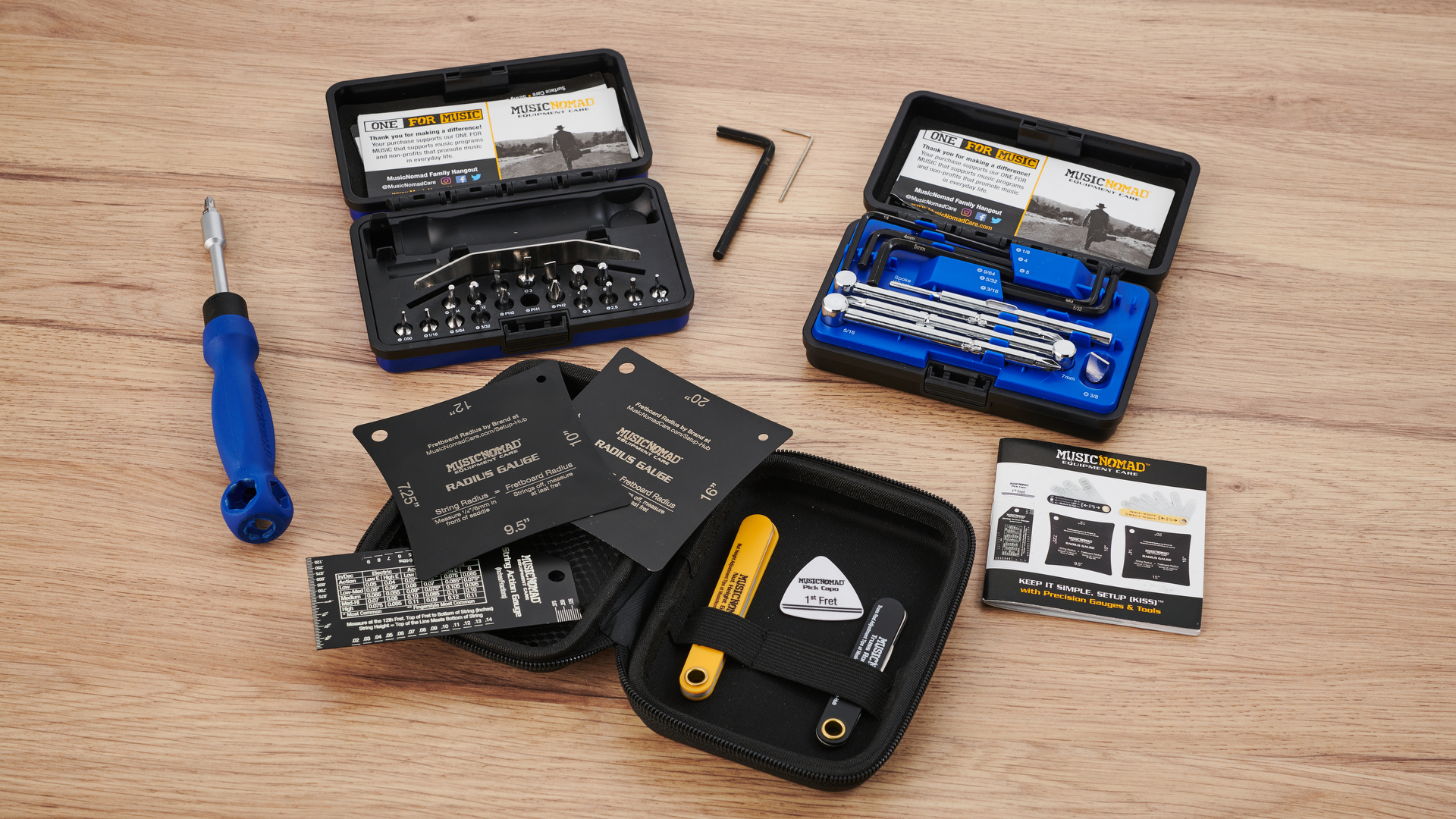
I use it constantly for checking and adjusting the truss rods on the guitars I review, which have often been exposed to changing temperatures of storage and transit before they reach me for testing. It's become one of my most used guitar accessories as a result, along with MusicNomad's Premium 26-piece Guitar Tech Screwdriver & Wrench Set and Premium Guitar Tech Truss Rod Wrench Set.
But for the steps I'm about to explain you can also use the truss rod that came with your guitar and source a gauge that suits your type of guitar and screwdriver for removing the truss rod cover if you have one.
Step 1: Getting access to your truss rod

Most truss rod's adjusted at the nut and with modern-style Fenders, the truss rod nut can be found at the headstock in the whole just near the guitar's nut above the first fret. For Gibson's it's in the same place but often under a truss rod cover.
The screws for this cover are more easily removed with a magnetic screwdriver so they don't get lost, and you'll see I'm being extra careful with a cloth in case I slip – I don't fancy relic'ing my headstock in that place!

While a lot of truss rod nuts for acoustic and electric guitars use a hex (allen) key for adjustment, Gibson electrics and Taylor acoustics use a nut wrench. The MusicNomad kit I'm using contains both types, but one should ship with your guitar and if you don't it, they are available widely to buy separately – 5/16" for Gibsons and 1/4" for Taylors.

Some guitar brands that don't have aesthetic traditions in the '70s – including Charvel – will place the truss rod adjustment as a 'wheel' at the bottom of the neck rather than the top. You can use anything solid that fits in the gap to turn it so they're pretty practical.

Vintage bolt-on necks – especially pre-1971 Fenders and some of its contemporary reissues of '50s and '60s models because fans of those guitars want the authenticity – make access to adjustment more difficult; a Phillips head at the base of the neck.
Sometimes you can access it by taking the scratchplate off (my battered and cherished 1992 Gordon Smith GS-1 is an example) but with Fenders, it can often involve slackening the strings substantially to take the neck off adjust using a Phillips screwdriver and then fit the strings again just to measure your adjustment. Not ideal. But there is something that can help that you might want to look into…

Where there is access at the base of the neck once you've taken the scratchplate off, Japanese brand Hosco has developed a Phillips-shaped wrench (shown above) to make things easier. You can get one from Thomann.

Martin acoustic guitars and some others will place the truss rod adjustment access nut inside the soundhole at the base of the neck. In this case you'll just need the right hex key – and no string removal is necessary. Yay!
Step 2: Diagnosing and adjusting your guitar's neck relief

Now we can get down to business! This is the part some players fear – the actual adjustment stage. There's no need to worry. Just follow these steps.
You'll need a metal 'feeler' gauge and a guitar pick, along with the truss rod adjustment tool for your specific guitar we've discussed. The MusicNomad six-piece MusicNomad Precision Setup Gauge Set includes three different metal gauges for electric guitar (.006"/.15mm), acoustic and bass guitar (.008"/.20mm) and classical guitar (.010"/.25mm). It also includes a pick.
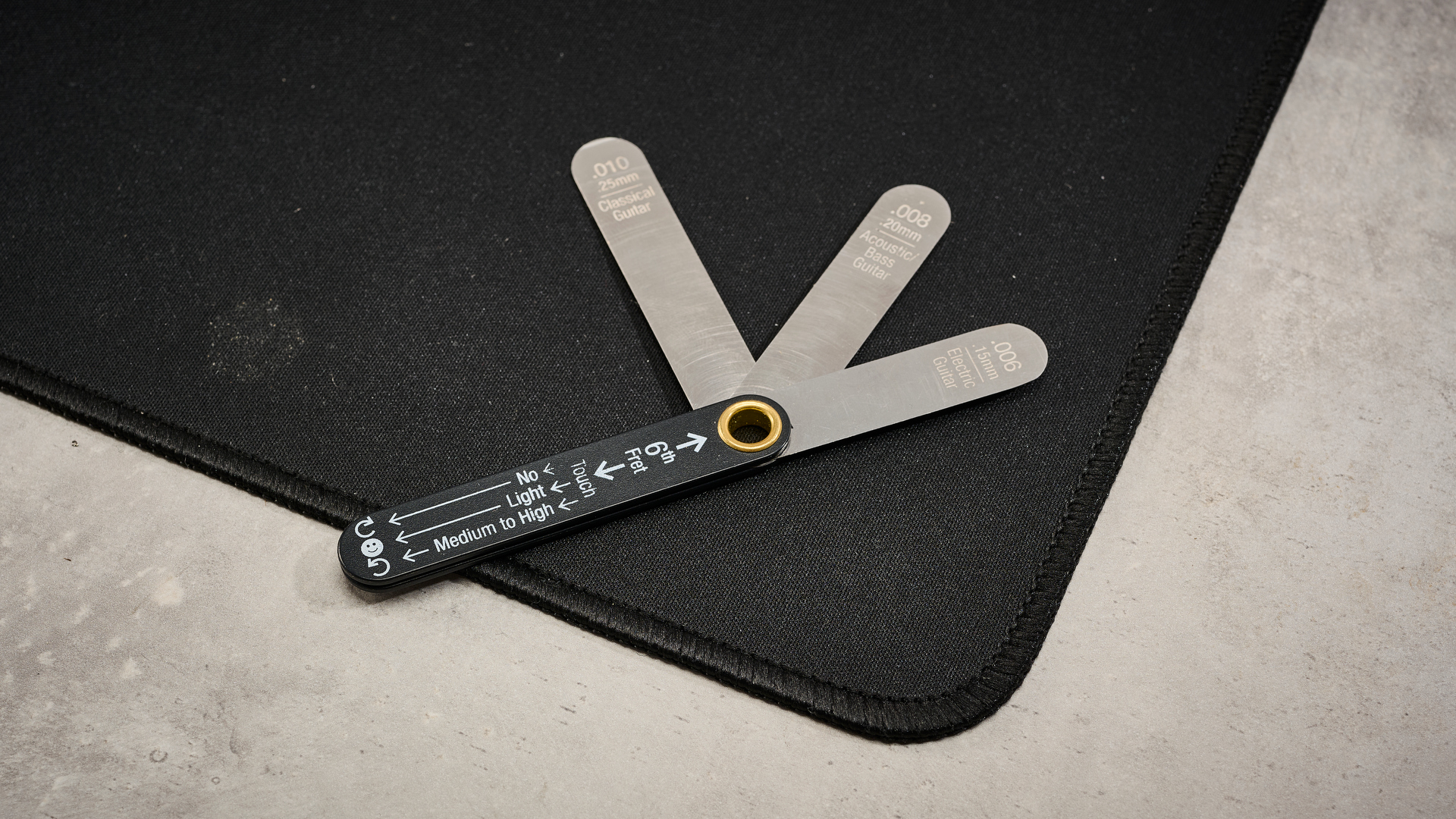
• First, you need to tune your guitar.
• Secondly, use the pick to hold down the guitar's low E string at the first fret. Do this by sliding it under the A strong and on top of the low E and D strings.
• Thirdly comes the gauge stage…
Each gauge in the MusicNomad set is designed to be inserted under the low E string at the sixth fret while the string is being held down at the 12th fret by your finger (as well as the first by the capo).
Sliding the gauge under the low E string at the sixth fret, what do you notice? MusicNomad has a 'Touch Rule' to help you decide what to do next.

If the gauge is resting on the fret but isn't touching the underside of the low E string, you'll need to adjust the truss rod nut clockwise by a maximum of 1/8 of a turn max each time.
If it's a really tight fit for the gauge under the low E string and it's lifting it up when you slide the gauge under, you'll need to turn the truss rod nut anti-clockwise.
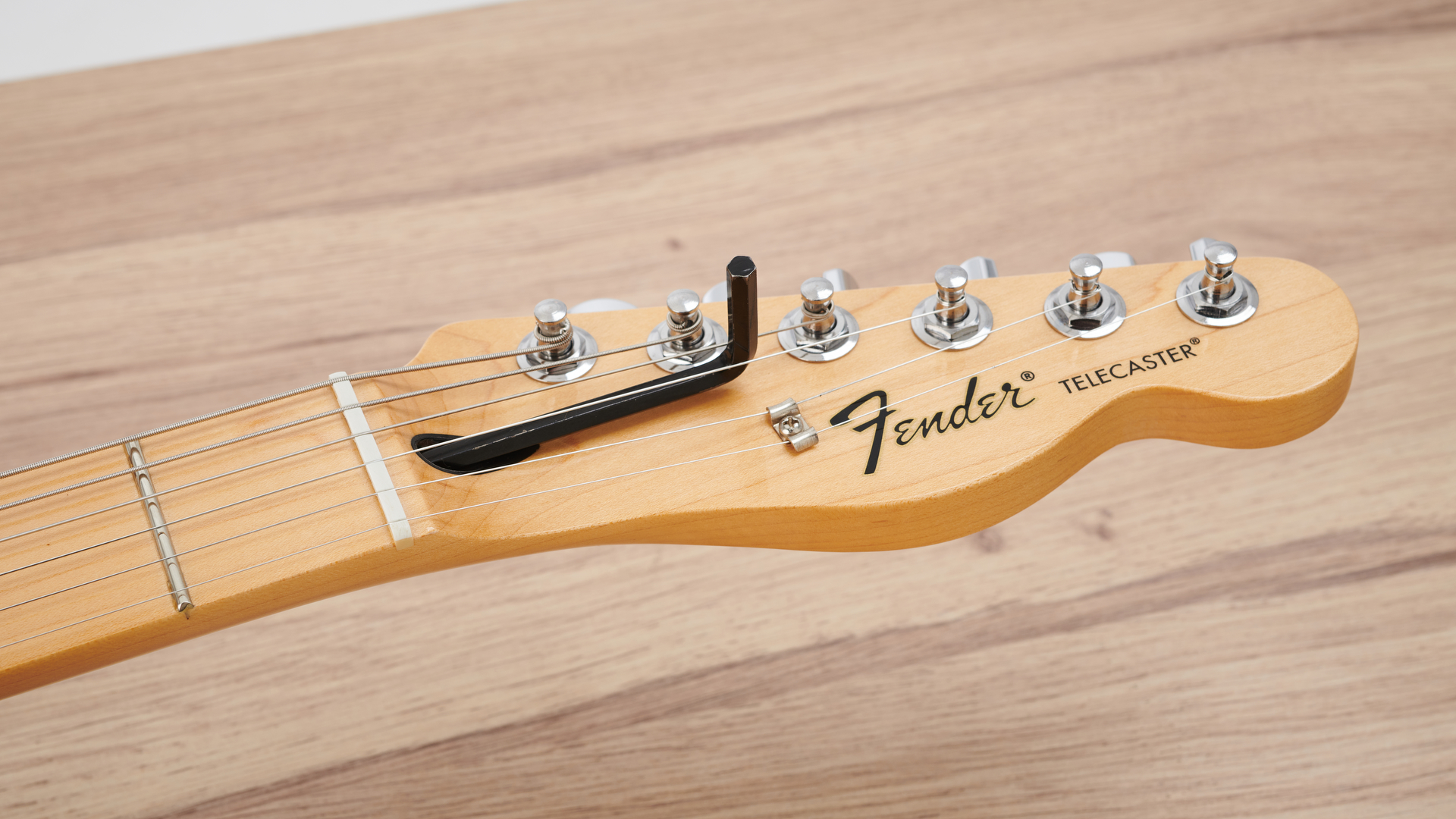
For the wheel type of truss rod adjustment at the base of the neck that I mentioned earlier, while looking from the bottom of the guitar body, rotate clockwise to add bow and flatten the relief, turn counterclockwise to add more relief.
After each 1/8 turn adjustment either way, check with the feeler guage again. The goal is for the gauge to lightly touch the underside of the low E string and allow it to slide in and out with ease.
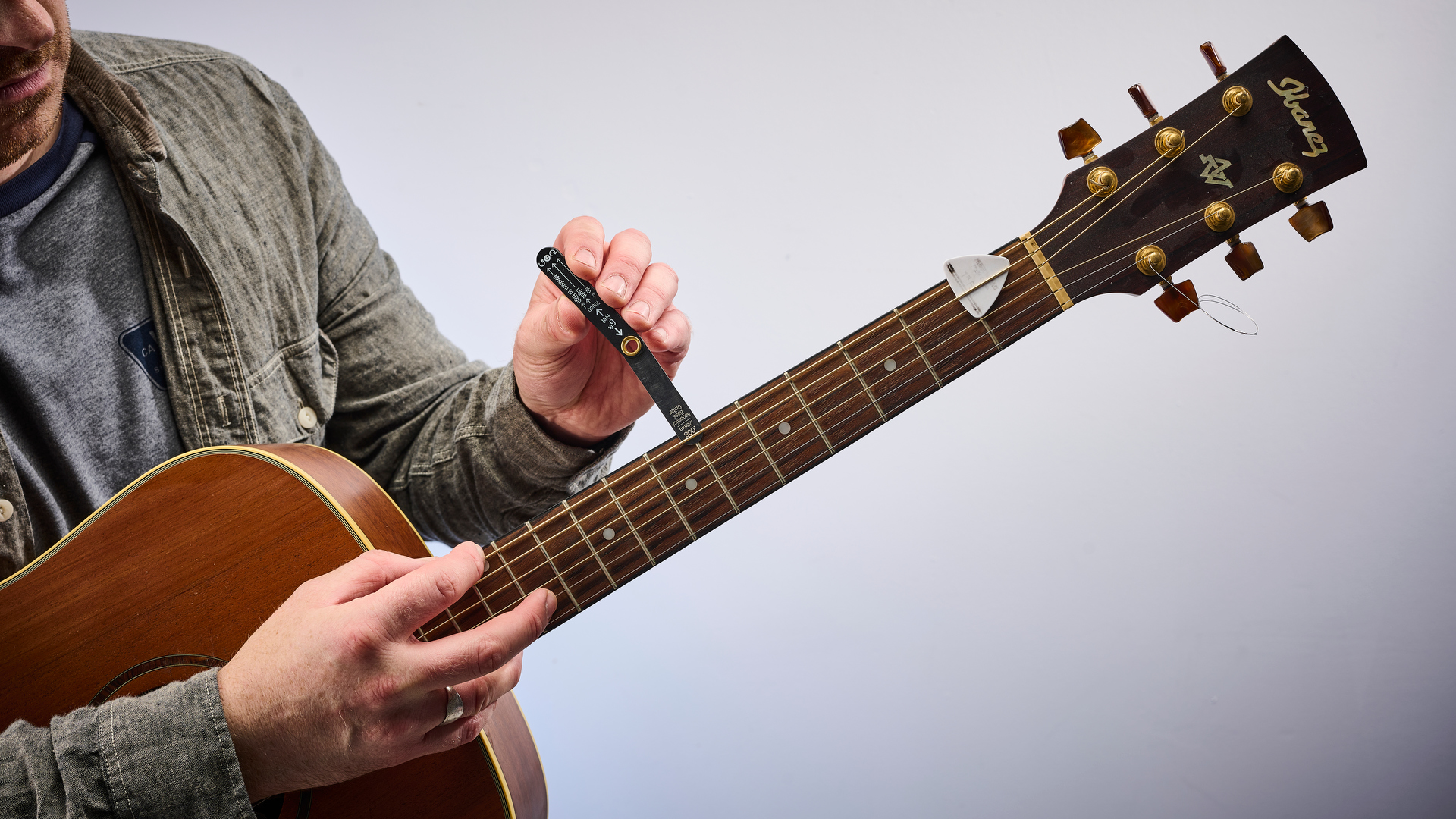
After adjustment
Don't just take the feeler gauge reading's word for it – play your guitar when you feel the neck relief is right. If there is buzz when playing in the first three frets there might be a little too much bow, so check the gauge again. In fact, you'll need to check it around 24 hours later to see if the neck had moved again – this isn't uncommon, so it may need a little tweak.


This is especially common if you've gone up or down a string gauge because it changes the amount of tension on the neck with heavier strings increasing tension bow and lighter sometimes adding more relief. The bigger the change in gauge, the higher the possibility of a change in neck relief, so this is where confidence with truss rod adjustment is vital to allow your neck to adapt to the new strings and keep it playing well.
And if you ever pick up your guitar and notice the action feels a little higher or buzzier than you remember, checking the neck relief should be your first port of call. That's why having a feeler gauge as part of your essential guitar toolkit is so important – it's always useful.
- Check out MusicNomadcare.com, Thomann and Sweetwater for more on the MusicNomad range of guitar and instrument maintenance tools and cleaning products.

Rob is the Reviews Editor for GuitarWorld.com and MusicRadar guitars, so spends most of his waking hours (and beyond) thinking about and trying the latest gear while making sure our reviews team is giving you thorough and honest tests of it. He's worked for guitar mags and sites as a writer and editor for nearly 20 years but still winces at the thought of restringing anything with a Floyd Rose.
“We are so unencumbered and unbothered by these externally imposed rules or other people’s ideas for what music should be”: Blood Incantation on the making of Absolute Elsewhere and how “Data from Star Trek” saved the album – and the studio
“I feel like that song had everything we needed to come back with”: Bring Me The Horizon’s Lee Malia on Shadow Moses, its riff and the secrets behind its tone, and why it was the right anthem at the right time










